Pinang Tunggal railway bridge
Triumph of modern British engineering in a remote corner of Seberang Perai
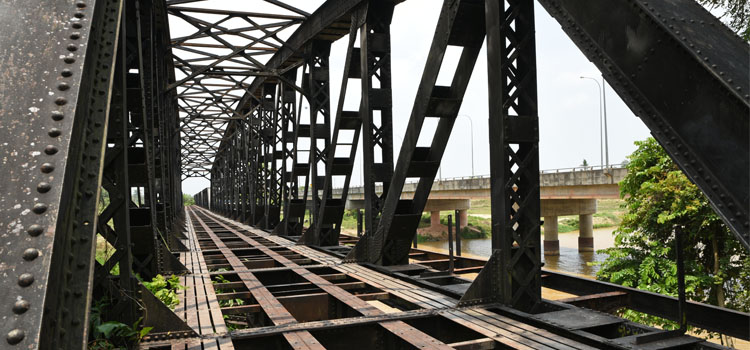
For almost an entire century folks at a rural northeastern quarter of Seberang Perai called Pinang Tunggal were familiar with a solid black-coloured wrought iron bridge that hulked over the Muda River.
Appearing formidable and imposing with its heavy metallic frame, the robust structure was built with a pair of rail lines running along its centre. Trains with steam engines were regularly seen whistling across the bridge to travel over the river.
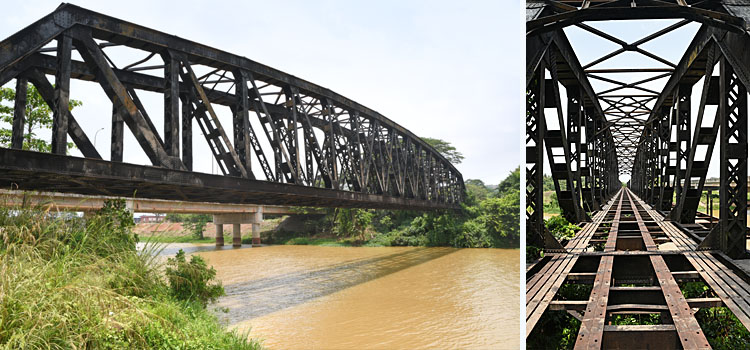
As a crossing it basically linked the states of Penang on its southern side and Kedah on the northern banks. For the hundreds of villagers in this isolated corner of the country it was the only physical connection to the other side of the river at this remote point. The bridge had narrow lanes on both its flanks where people walked or rode through on their bicycles.
This bridge was certainly of significant importance for the British to have forked out a handsome sum, including for necessary manpower and capital on its construction, to make the rail connection complete.
As a railway artery, it was frequently used by British colonial officers and locals alike who traversed by train between Bukit Mertajam town in Seberang Perai and the small city of Alor Setar in Kedah. This route is recorded in a 1921 pamphlet of information for travellers titled, "Federated Malay States Railways" authored by the FMS Railways' then general manager, P.A. Anthony. A copy of the pamphlet is in the possession of the Cornell University Library's Southeast Asia Visions Collections.
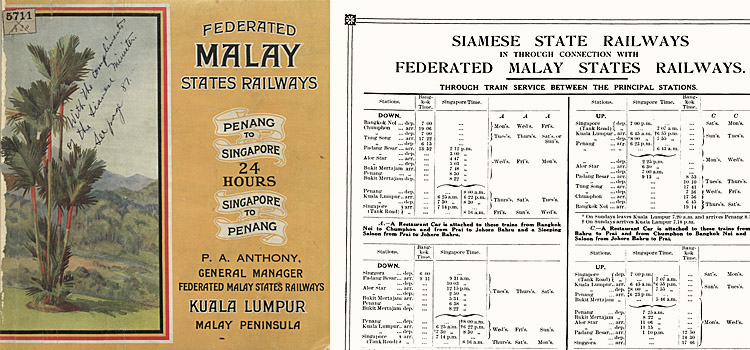
On page 86 (reproduced herewith), the journey between Alor Setar and Bukit Mertajam is listed as part of an overall trip from Bangkok to Singapore. Interestingly, the page lists features like a "Restaurant Car" and a "Sleeping Saloon" as part of the facilities for travellers.
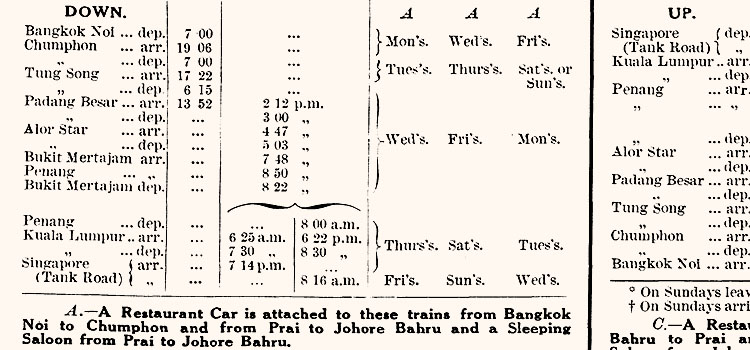
The emergence of the rail network was partly fuelled by the booming tin mining and rubber industries during the early part of the 20th century, to facilitate transport of goods and materials. The burgeoning urban centres in Alor Setar and its surroundings must have also created demand for consumer goods to be transported speedily and in large shipments via the rail service.
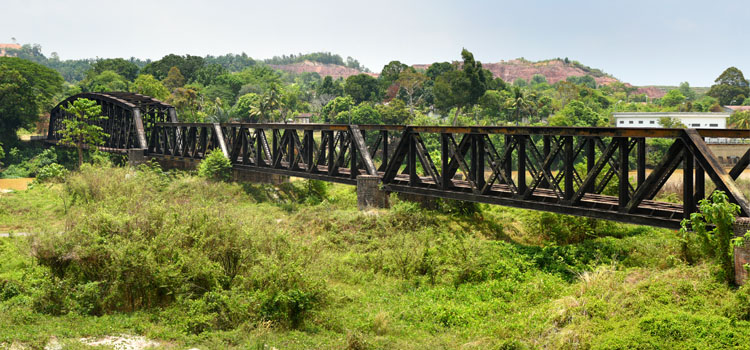
The Pinang Tunggal Railway Bridge is today in a state of abandonment and neglect even though it continues to stand with its impressive metallic black physique. It fell into disuse when a new and much wider bridge was built beside it for road vehicles, and another concrete bridge was constructed for modern-generation trains – the spanking new Electric Train Service uses this bridge – about a decade ago.
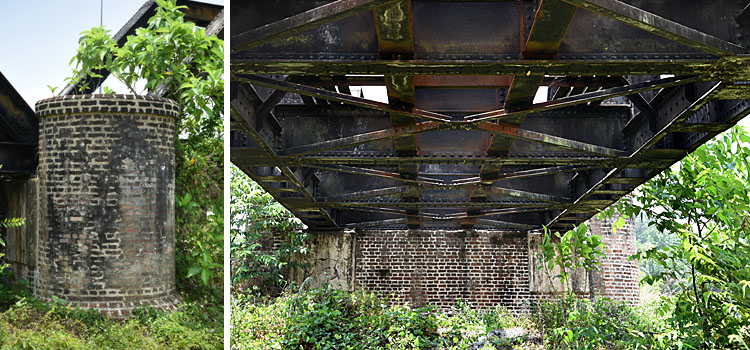
The bridge however remains a triumph of early modern British engineering. For it is instantly striking and impressive with its magnificent metallic stretch suspended over an expansive 75-metre width of the river. Despite its age, the entire structure stands with amazing solidity, still looking as though it was built just yesterday. The brickwork looks intact and well preserved while the fist-size bolts are tight and bounded as they were after they were first installed more than a hindered years ago.
People do still occasionally get near it, mostly for scenic photo shoots. The Malaysian movie ‘The Journey’ had one of its scenes filmed here.
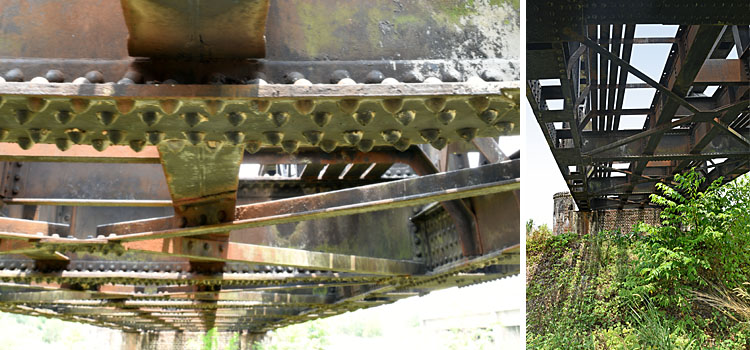
Sadly, there does not seem to be anyone alive today who can recall exactly when and how the structure was built. It was quite certainly put together between 1912 and 1915 when the rail line between Bukit Mertajam and Alor Setar was being constructed by the Federated Malay States Railways, with the segment between Pinang Tunggal and Gurun in Kedah officially opened on 1 March 1915.
The bridge’s huge iron frames as well as the tough and resilient nuts and bolts were also likely ordered and shipped from Britain as was the trend in those days for the building of railway lines.
The best clue on the design’s conception lies in the bridge’s close resemblance to the make and architecture of the Guillemard Bridge built by the British in Kelantan in 1924. Like the Pinang Tunggal Railway Bridge, the much bigger Guillemard which goes over the Kelantan River was designed with a truss superstructure as was a common engineering method in that period.
(One can also draw comparisons with the Victoria Bridge, another railway truss bridge, built over the Perak River in Karai, in 1900.)
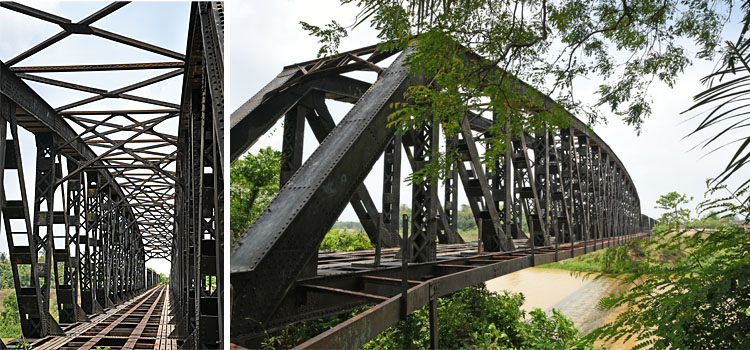
The Pinang Tunggal Bridge is, however, unique compared to other bridges of that time in that it did not have any supporting pillars embedded on the riverbed. The entire structure was built to straddle between sturdy brick abutments - shaped like circular turrets on the rampart of a castle - on the grassy banks at both sides of the Muda River.
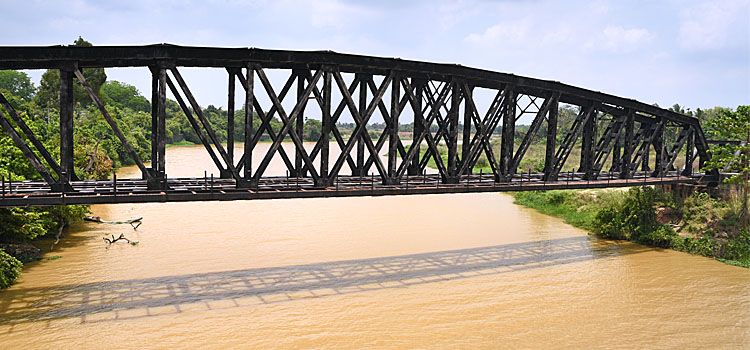
The structure should rightfully be preserved. It is an indelible part of the nation’s early transportation and infrastructure history. Its quiet but lasting existence till the present day and beyond is a silent tribute to the engineering ingenuity of our forebears and their resolute pioneering spirit to explore and carve pathways through the most daunting of wildernesses.
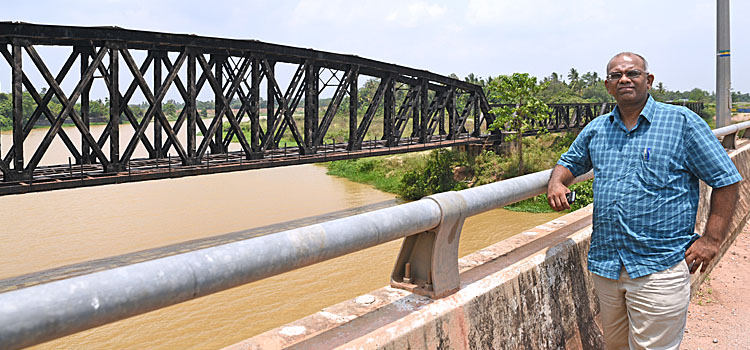
-------------------------------------------
Written by Himanshu Bhatt
Photographs by Adrian Cheah